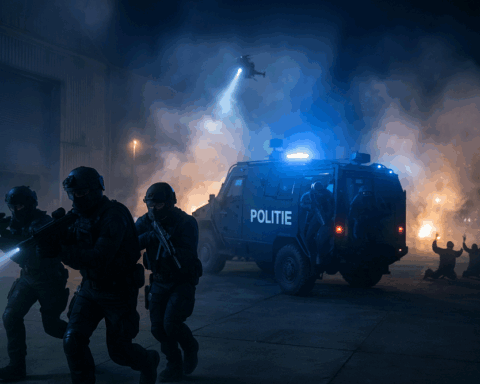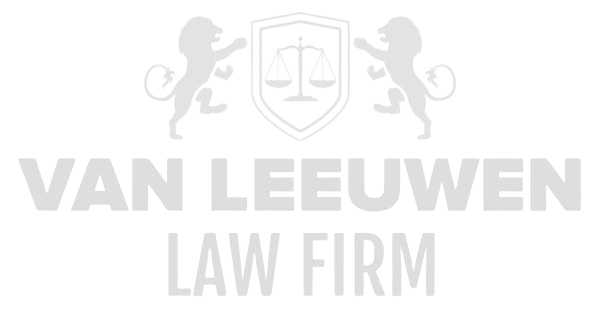The Public Assemblies Act (Wet openbare manifestaties, Wom) constitutes a crucial instrument within the Dutch legal system, designed to regulate the delicate balance between fundamental civil rights and the maintenance of public order. Essentially, this law provides a framework in which the freedom of expression, assembly, and demonstration is safeguarded, as enshrined in both the Constitution and international treaties, while granting explicit powers to mayors and local authorities to ensure safety, health, and traffic management during public gatherings. The significance of the Wom becomes particularly evident in situations where demonstrations or assemblies have the potential to disrupt public order, with the law functioning as a tool to prevent escalation, accidents, and even subversive influences. The law should not be viewed merely as a permit system; rather, it is an instrument that provides a balanced and strategic framework for weighing fundamental rights against the protection of citizens from risks arising from large-scale or emotionally charged gatherings.
The legal framework of the Wom is further essential for a robust approach to undermining and illegal influence within public spaces. Demonstrations and assemblies are not merely expressions of civic participation; they can also be exploited by groups that operate at the boundaries of the law, causing potential harm to citizens, property, or infrastructure. In this context, the law functions not only as a preventive instrument but also as a tool for response and enforcement, with the mayor playing a central role in anticipating risks, coordinating police resources, and implementing necessary measures. The Wom provides a system to limit excesses, minimize the risk of escalation, and facilitate a controlled dialogue with demonstrators, without compromising the core of democratic freedoms. In cases where citizens suffer injuries or property damage due to non-compliant behavior by third parties during assemblies, the Wom establishes a legal framework to assess the responsibility of organizers and enable legal action against violations or negligence.
Fundamental Rights Framework
The foundation of the Public Assemblies Act rests on a carefully constructed framework of fundamental rights. Article 7 of the Constitution, in conjunction with Articles 6 and 9, guarantees freedom of expression, assembly, and religious belief. The provisions of the European Convention on Human Rights (ECHR), particularly Articles 10 and 11, also serve as a benchmark for the scope of these freedoms. These fundamental rights are not absolute; restrictions are only permitted by law and must be justified based on the necessity to protect health, traffic, or public order. In practice, this means that any restriction on a demonstration or assembly must be carefully weighed against the essence of the right, with proportionality and subsidiarity assessments applied.
The legal framework emphasizes that the exercise of these rights may only be limited in exceptional circumstances. Preventive assessment of the content of the message is explicitly excluded, prohibiting suppression based on opinion or political conviction. This principle has significant practical implications: restrictions must always be objectively justified, for example, when there are concrete risks to public order or imminent health hazards. In the context of countering subversive activities, this is particularly important, as certain groups may strategically use demonstrations to undermine public order or intimidate others.
The need for a robust fundamental rights framework is evident in how citizens and authorities are protected and held accountable in the event of incidents. Non-compliant behavior resulting in injuries, property damage, or obstruction of traffic can give rise to legal liability for organizers and even individual participants. This forms an integral part of the preventive function of the law, where fundamental rights serve as a basis but may not act as a shield for actions that endanger public safety. In this regard, the fundamental rights framework functions as a benchmark for all restriction decisions, orders, and potential prohibitions, with constant attention to proportionality, necessity, and legal reviewability.
Scope of the Wom
The Public Assemblies Act explicitly applies to public gatherings in which multiple individuals express their opinions publicly. Article 1 Wom defines this scope, emphasizing the distinction between private gatherings, events, or religious assemblies. Individual actions fall outside the Wom, while public demonstrations and assemblies fall within its application. This distinction is essential for operationalizing enforcement, as it determines when the mayor may exercise powers and which procedures must be followed.
The scope of the Wom covers both peaceful assemblies and situations where potential disruption of public order is anticipated. Through this broad application, the mayor can anticipate risks such as conflicts between different groups of demonstrators, escalation to violence, or sabotage of public infrastructure. The law explicitly provides for police support, with the allocation of personnel and resources tailored to the size and nature of the gathering. In the context of subversive risks, this provision is crucial, enabling preventive measures to detect and mitigate organized disruptions in a timely manner.
Additionally, the Wom distinguishes clearly between demonstrations and ordinary events, such as cultural or sporting gatherings, which fall under the Municipal Act and the General Local Regulation (APV). This demarcation prevents legal confusion and ensures that demonstrations are treated on a separate legal basis, with a specific focus on public order and safety. As a result, mayors can respond effectively when demonstrations present heightened risks of subversion or escalation, while peaceful gatherings of citizens are facilitated within a protective and proportionate legal framework.
Notification System
The notification system, governed by Article 2 of the Wom, functions as one of the cornerstones of the law. Organizers are required to notify the mayor of their demonstration in advance, without the need for a permit. The primary purpose of this system is to safeguard fundamental rights, not to impose restrictions. Timely notification allows the mayor to coordinate necessary measures, such as police resources, traffic diversions, and safety arrangements, ensuring that public order is maintained and risks of accidents or escalation are minimized.
Failure to comply with the notification obligation provides the mayor with a legal basis to prohibit a demonstration, provided there is a concrete threat to health, traffic, or public order. However, spontaneous peaceful protests may not be prohibited arbitrarily, as explicitly emphasized by the National Ombudsman. This serves as an important safeguard against arbitrary restrictions, reinforcing the principle that fundamental rights are paramount, while restrictions must be strictly justified. The notification system thus offers both preventive and strategic options for enforcement, with an emphasis on proportionality and necessity.
The notification system also facilitates dialogue between authorities and organizers, enabling arrangements regarding locations, routes, and schedules. This prevents demonstrations from occurring unexpectedly or chaotically, reduces the likelihood of escalation, and limits the risk of harm to third parties caused by inadequate planning or coordination. In instances where citizens or third parties suffer injury or damage due to poorly organized events, the notification provides a legal reference point for assessing the organizer’s liability and implementing measures for compensation or remediation.
Grounds for Restrictions
The Public Assemblies Act provides a strictly limited number of grounds on which a demonstration may be restricted or prohibited. Article 5, paragraph 2, sub c, Wom explicitly cites health, traffic, and public disorder as the only justifications. Restrictions may never be imposed based on the content of the message or the political convictions of participants. These restrictions are only permitted if concrete, objective risks are demonstrably present, serving as a crucial safeguard against arbitrary or abusive use of authority.
Restrictions must always be applied proportionally and with due regard to subsidiarity. This means that less intrusive measures, such as adjusting the route, time, or location, must first be considered before imposing a total ban. The burden of proof for the existence of concrete risks lies with the mayor, establishing a high legal threshold for imposing restrictions. In situations where demonstrations pose risks of subversion, intimidation of citizens, or direct damage to property, these grounds can serve as a legitimate basis for imposing stringent measures, provided they are proportionate and documented in writing.
In addition to the legal obligation of proportionality, there is an explicit duty to provide reasoning, as set out in Article 3:46 of the General Administrative Law Act (Awb). This requirement mandates that the mayor not only indicates the basis for restrictions but also explains why less intrusive measures are insufficient. This legal mechanism ensures transparency and provides demonstrators with protection, creating a balance between facilitating fundamental rights and safeguarding society from subversive or potentially violent assemblies.
Orders and Instructions
The Public Manifestations Act grants the mayor a range of powers to take enforcement action during a demonstration, without unjustifiably restricting the fundamental right to protest. Article 6 of the Act stipulates that the mayor may issue instructions to protect health, traffic, or public order. These instructions can be applied individually, for example targeting a specific participant, or generally to all attendees. The purpose of this authority is not merely repressive but primarily preventive: clear instructions can prevent escalation, limit potential conflicts, and minimize the risk of injury or damage to third parties.
Article 7 of the Act gives the mayor the power to terminate a demonstration if the situation requires it. This may be necessary in the event of imminent disorder or when the safety of participants or bystanders is at risk. The police are responsible for implementing these instructions and may use coercive measures within the bounds of the law, ensuring that participants’ fundamental rights are preserved. Emergency orders and emergency regulations, as provided for in the Municipalities Act, may also be used in acute situations, enabling the mayor to prevent serious disorder and control further escalation.
The legal review of orders and instructions is strict yet proportionate. Written documentation of all measures provides both organizational and legal transparency and ensures that citizens have the opportunity to object or appeal. These procedural safeguards are essential, especially when demonstrators or third parties suffer damage as a result of authorities’ actions or when questions arise regarding the legality of the intervention. This creates a balance between the necessary enforcement of public order and the protection of individual rights.
Prohibition of Demonstrations
Prohibiting a demonstration represents the ultimate remedy under the Public Manifestations Act. Article 5, paragraph 2, of the Act stipulates that a prohibition may only be imposed in cases of threats to health, traffic, or public order, and not based on the content of the message. The standard for such a prohibition is strict: there must be a serious, real threat, for example, if police capacity is insufficient to prevent escalation or if the demonstration poses a substantial risk of harm or injury to citizens.
When applying a prohibition, the mayor must first offer alternative locations or routes so that the demonstration can, if possible, take place in a safe context. The prohibition must be concretely and temporarily justified, ensuring that the proportionality and subsidiarity of the measure remain legally reviewable. In cases of urgent threat, a temporary prohibition may be imposed, but even then a solid justification is required. This careful balancing is particularly important in situations where subversive groups could exploit demonstrations to create chaos or intimidate vulnerable groups.
Courts review prohibitions more rigorously than restrictions, with particular attention to respecting fundamental rights. A prohibition that is not supported by a substantial threat may be overturned and can give rise to compensation claims for citizens unlawfully obstructed. This reinforces the preventive and corrective nature of the Act and emphasizes the principle that restrictions may only be applied when absolutely necessary to protect public order, health, or traffic.
Public Disorder
Public disorder constitutes one of the core grounds for restrictions under the Public Manifestations Act. Article 5, paragraph 2, sub c, provides that measures may be taken to combat or prevent disorder, such as imminent confrontations between groups of demonstrators or escalation toward violence. The concept of disorder requires a concrete and current threat; merely hypothetical or generally political concerns do not constitute a valid basis for intervention. Threat assessment considers context, the prior history of involved groups, and available police resources, enabling a proportionate and well-considered response.
In situations where demonstrations involve subversive elements, such as organized attempts to intimidate citizens, damage property, or disrupt vital infrastructure, the roles of the mayor and the police become crucial. Measures may include rerouting, separating groups, or imposing temporary prohibitions or instructions to prevent escalation. The proportionality of these measures is assessed by the courts, ensuring that excessive restrictions are avoided and the rights of peaceful demonstrators are protected.
The preventive nature of the Act regarding disorder also provides a legal basis for liability issues. When citizens or organizations suffer damage due to organizer failure or negligent conduct during a demonstration, claims may arise. Simultaneously, the framework allows for targeted measures against subversive activities, such as monitoring groups that systematically engage in violence or intimidation, making the Act function both as an enforcement instrument and as a tool for societal protection.
Role of the Municipal Council and Local Regulations
The municipal council plays a supportive yet significant role within the framework of the Public Assemblies Act. Article two, paragraph three, of the Act specifies that the council is responsible for regulating the method by which notifications of assemblies are made. This is typically done through the General Local Regulation (APV), which sets out deadlines, formats, and any administrative requirements. While the council can establish rules to promote order and safety, such legislation must never unduly restrict citizens’ fundamental rights. This creates a defined but facilitative framework in which the council indirectly influences the conduct of assemblies, while the mayor remains primarily responsible for operational enforcement.
The APV also serves as a practical coordination tool. Matters such as traffic measures, police capacity, and public safety can be organized within this regulation without undermining the core freedom of assembly. The legal importance of this provision lies in creating a framework within which mayors and security services can operate in a uniform manner while ensuring citizens’ legal protections. In cases of subversion, sabotage, or imminent violence, the APV also allows for the establishment of protocols for inter-agency cooperation, ensuring that public order is adequately maintained.
The interaction between the municipal council, APV, and mayor requires careful coordination. Overlaps or conflicts between local regulations and the Public Assemblies Act may create legal uncertainty, particularly when restrictions or instructions are issued. It is therefore crucial that the council adopts clearly facilitative rules that enable the mayor to respond effectively to imminent disorder or escalation. This protects both society and individual demonstrators from arbitrary or disproportionate interventions while simultaneously establishing a legally reviewable structure for managing high-risk situations.
Legal Protection
The Public Assemblies Act is closely integrated with the system of legal protection under the General Administrative Law Act (Awb). Decisions by the mayor, such as instructions, restrictions, or bans, qualify as administrative decisions (Article 1:3 Awb) and can be challenged through objection (Article 7:1 Awb) and appeal to the administrative court (Article 8:1 Awb). These procedures allow citizens to review the legality of measures in a legally accountable manner, with the court performing a marginal but critical review, giving particular attention to the protection of fundamental rights.
The law also provides for urgent measures and provisional remedies (Article 8:81 Awb) when an assembly is at risk of escalating in the short term and immediate legal protection is necessary. The court assesses the proportionality and subsidiarity of the imposed measure and checks whether the mayor’s obligation to provide reasoning (Article 3:46 Awb) has been correctly fulfilled. In cases where a banned assembly is unlawfully imposed, citizens or organizers may claim reimbursement of legal costs and damages (Article 8:88 Awb), embedding a robust corrective mechanism within the law.
The legal protection framework is also essential in situations where citizens or third parties suffer harm due to non-compliant behavior during assemblies. It provides a legal tool to establish responsibility and assess liability. In cases of subversion or escalation, this mechanism functions not only as a corrective instrument but also as a preventive one: organizers are encouraged to prepare adequately and comply with legal requirements, reducing risks to society and individual citizens.
Relation to Other Authorities
The Public Assemblies Act does not operate in isolation but functions in close conjunction with other statutory powers and frameworks. Articles 172, 175, and 176 of the Municipal Act provide authorities for maintaining public order, emergency orders, and emergency decrees in cases of serious disorder. Overlaps with the General Local Regulation, the Police Act, and criminal law (Article 184 Penal Code – failure to comply with orders) are inevitable, creating a coherent and integrated security framework. Mayors can strategically deploy these instruments to prevent escalation during assemblies and protect public order, with the proportional use of powers being central.
There is also a close relationship with sector-specific legislation, such as the Road Traffic Act and the Public Health Act. These laws provide additional legal grounds for restrictions, for example regarding traffic safety or health risks. International treaties, such as the ICCPR (Article 21), serve as the normative framework against which national measures are assessed, ensuring legal protection for demonstrators and evaluating the proportionality of governmental interventions.
The integration with other powers is particularly important in the context of subversion and organized threats. In situations where assemblies could be exploited by criminal or extremist groups, the combination of the Public Assemblies Act, Municipal Act, and Police Act provides a legally robust basis for implementing impactful yet proportionate measures. This strengthens the operational capacity of the mayor and police to effectively maintain public order, prevent harm to citizens, and simultaneously respect the fundamental rights of peaceful demonstrators.









